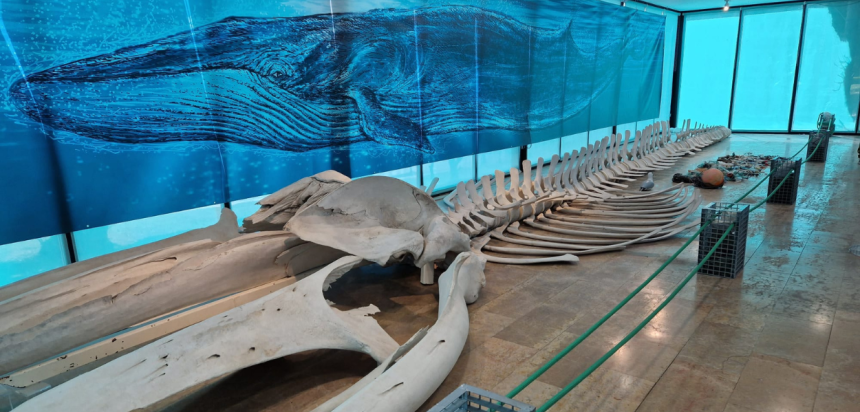The Museum of Natural Sciences of Valencia, has inaugurated this Friday 22nd March, the temporary exhibition entitled The Eye of the Whale. Exhibition of scientific photography, which can be visited until 30 September 2024.
The Eye of the Whale is an exhibition of scientific photography and is the result of research carried out by Dr. Elena Vecino and her team, on the study of the cells of the retina of the eye of a fin whale, which was stranded on a beach in Sopelana (Vizcaya) in 2019.
This exhibition disseminates the conclusions of their research and has made it possible to understand how the vision of these large cetaceans works: why they have low vision, why they cannot distinguish colours and also to understand how the cells of the retina play a crucial role in their survival, allowing them to navigate in the vast oceans and interact with their marine environment.
Visitors will be able to discover this thanks to the explanations that accompany all the photographs obtained by electron microscopy, which become true works of art that capture the essence of the whales’ vision. In 2023, one of the photographs, the giant whale neuron, was selected in the FECYT’s Fotociencia competition, highlighting the aesthetic beauty of these scientific photographs, where curiosity meets creativity and science intertwines with emotion.
The exhibition also has two projections, one entitled “Elena and the Whale”, an animation that explains the whole research process led by Dr. Elena Vecino and which has given rise to this exhibition, and another entitled “How whales see”, which disseminates the results of the research by understanding how whale vision works. The exhibition is accompanied by a catalogue, which includes a description of each photograph following the rules of “easy writing”, along with QR codes that allow access to the audio guide and videos.
